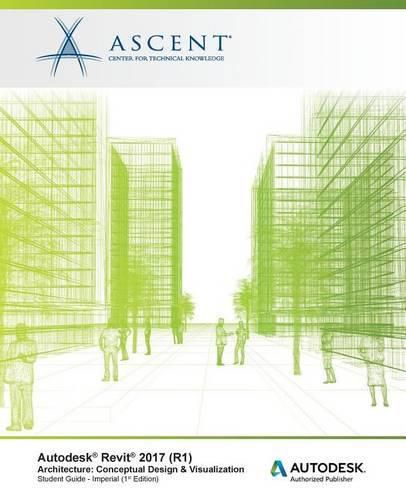Readings Newsletter
Become a Readings Member to make your shopping experience even easier.
Sign in or sign up for free!
You’re not far away from qualifying for FREE standard shipping within Australia
You’ve qualified for FREE standard shipping within Australia
The cart is loading…






As architects and designers start a project, they frequently think about the overall massing of a building or the area of the footprint. The Autodesk® Revit® software, using its powerful Building Information Modeling (BIM) engine, includes tools for creating mass elements that can be modified into many shapes. You can then apply walls, roofs, and floors to them to continue designing. You can also access space planning tools for setting up areas for rooms and also applying colors for them to show the connections. For presentations, you can create, embellish, and render perspective views. The objective of the Autodesk® Revit® 2017 (R1) Architecture: Conceptual Design & Visualization student guide is to enable students who have worked with the Autodesk Revit software to expand their knowledge in the areas of Conceptual Design, including massing studies, space planning, visualization, and rendering. Topics Covered Create In-Place Conceptual Mass elements Create building elements from massing studies Use Rooms and Areas for space planning and analysis Create perspectives, sketches, exploded views, and solar studies Render views that include materials, lighting, and enhancements such as people and plants. Prerequisites Students should be comfortable with the fundamentals of the Autodesk Revit software, as taught in the Autodesk Revit Architecture Fundamentals course. Knowledge of basic techniques is assumed, such as creating walls, roofs, and other objects, copying and moving objects, creating and working with views, etc. Collaboration Tools, BIM Management, and Site and Structural Design are taught in additional courses.
$9.00 standard shipping within Australia
FREE standard shipping within Australia for orders over $100.00
Express & International shipping calculated at checkout
As architects and designers start a project, they frequently think about the overall massing of a building or the area of the footprint. The Autodesk® Revit® software, using its powerful Building Information Modeling (BIM) engine, includes tools for creating mass elements that can be modified into many shapes. You can then apply walls, roofs, and floors to them to continue designing. You can also access space planning tools for setting up areas for rooms and also applying colors for them to show the connections. For presentations, you can create, embellish, and render perspective views. The objective of the Autodesk® Revit® 2017 (R1) Architecture: Conceptual Design & Visualization student guide is to enable students who have worked with the Autodesk Revit software to expand their knowledge in the areas of Conceptual Design, including massing studies, space planning, visualization, and rendering. Topics Covered Create In-Place Conceptual Mass elements Create building elements from massing studies Use Rooms and Areas for space planning and analysis Create perspectives, sketches, exploded views, and solar studies Render views that include materials, lighting, and enhancements such as people and plants. Prerequisites Students should be comfortable with the fundamentals of the Autodesk Revit software, as taught in the Autodesk Revit Architecture Fundamentals course. Knowledge of basic techniques is assumed, such as creating walls, roofs, and other objects, copying and moving objects, creating and working with views, etc. Collaboration Tools, BIM Management, and Site and Structural Design are taught in additional courses.